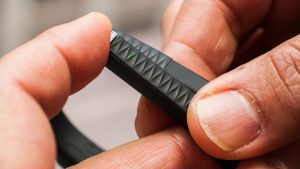 Once valued as much as $3 billion, tech startup jawbone has just begun liquidation proceedings. Founded in 1999, the company was among the early pioneers of Bluetooth technology, specializing in the in-ear headphone that helped to emerge the hands-free device industry. The company grew to success probably thanks in part to its integration of military-grade noise-canceling technology, a technology which the company developed in-house.
Once valued as much as $3 billion, tech startup jawbone has just begun liquidation proceedings. Founded in 1999, the company was among the early pioneers of Bluetooth technology, specializing in the in-ear headphone that helped to emerge the hands-free device industry. The company grew to success probably thanks in part to its integration of military-grade noise-canceling technology, a technology which the company developed in-house.
As a matter of fact, Jawbone’s portfolio of patents could have a value anywhere between $12 and $15 million which, in many cases would be an asset to larger tech firms like Apple, Samsung, and Google, though none are jumping in to help. Jawbone had managed, at least at one time, to win over the likes of big-time VC investors Sequoia Capital and Andreessen Horowitz.
But Jawbone was not only a pioneer in the wearables market (and that was before “wearables” was a buzz word). The company also helped to pioneer the portable speaker market with their flagship Jambox product. The wireless speaker, of course, connects to mobile phones through Bluetooth technology to provide the highest in sound quality combined with their trademarked noise-canceling technology. This product was also innovative, at the time, because it ran on a rechargeable internal battery.
Of course, Jawbone also continued to work on these designs. Eventually they worked on two additional models: the Big Jambox and the Mini Jambox. By that time, unfortunately, the market was on its inevitable way to saturation and the more established manufacturers—the big names—released competing models that quickly soared to more popularity.
Jawbone also developed an early fitness tracker called the Jawbone Up. The wearable could track exercise, issue movement alerts, and monitor sleep cycles—yes, all the things that your FitBit does today. However, the Up3 had a too-high retail price of $179.99 that qualified it as a “premium” item, scaring off many consumers.
And it may be that focus on wearables that led to Jawbone’s demise. As competition from tech giant Apple steamed up, Jawbone might have been better off sticking with its bread and butter.
